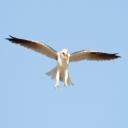Yahoo Answers is shutting down on May 4th, 2021 (Eastern Time) and beginning April 20th, 2021 (Eastern Time) the Yahoo Answers website will be in read-only mode. There will be no changes to other Yahoo properties or services, or your Yahoo account. You can find more information about the Yahoo Answers shutdown and how to download your data on this help page.
Trending News
Do tarantulas suck the blood from their prey?
I have been taught that spiders sucking the blood from their pray was a myth but I have now seen evidence that proves different. I usually feed my tarantula small crickets so I haven’t seen this before, but this time I gave him a larger one and 10 minutes later, their was a hollow shell that was in the shape of the crickets entire body. The shell was translucent too. I watched him and a few minutes later he walked back and ate the shell too.
5 Answers
- Anonymous2 years agoFavorite Answer
the venom they inject liquefy's the tissue and they drink that.
- Elaine MLv 72 years ago
They liquefy the fluids in the body of their prey. They then suck it out. They don't have parts for chewing so this is how they eat.
- Anonymous2 years ago
Myth: Spiders do not literally eat the insects they kill; they only suck the "juices" or blood.
Fact: You can find this myth in many books; even some scientists, who have never bothered to look for themselves, believe it. There is not a particle of truth in this idea! Spiders are not miniature vampires; all species, as far as we know, digest some solid parts of their prey. What makes it especially interesting is that the digestion process begins outside the spider, where anyone who wants to look can see how it works.
Put a medium-sized insect in the web of a large orbweaving spider in the garden. You will see the spider bite the prey, wrap it in silk, wait for it to die, then begin to eat. As a first step in eating, the spider will literally vomit digestive fluid over the prey. Then the prey is chewed with the "jaws" (chelicerae), and the fluid is sucked back into the mouth together with some liquefied "meat" from the prey. The spider repeats this process as often as necessary to digest, and ingest, all but the inedible hard parts. What is discarded afterwards is a small ball of residue.
Spiders other than orbweavers may eat the prey's body but discard some of the wings, legs, etc. Spiders with very small (if strong) jaws (such as crab spiders and cobweb weavers) make small holes in the prey and vomit their digestive fluid into the prey's body, the end result being a hollow shell with some or most of the muscles and internal organs digested and sucked out.
Source(s): Burke Museum | University of Washington | Seattle | WA | USA - 2 years ago
Spiders will inject venom and digestive enzymes into their prey. The digestive enzymes liquefy the inside of the prey. The spiders than suck up the liquefied content. It is not just blood or their equivalent that the spider will feed on, Anything that is digestible will be eaten.
- How do you think about the answers? You can sign in to vote the answer.
- 2 years ago
spiders usually catch the prey and poison the bug with a venom that dissolves the insides, then they slurp it up.






